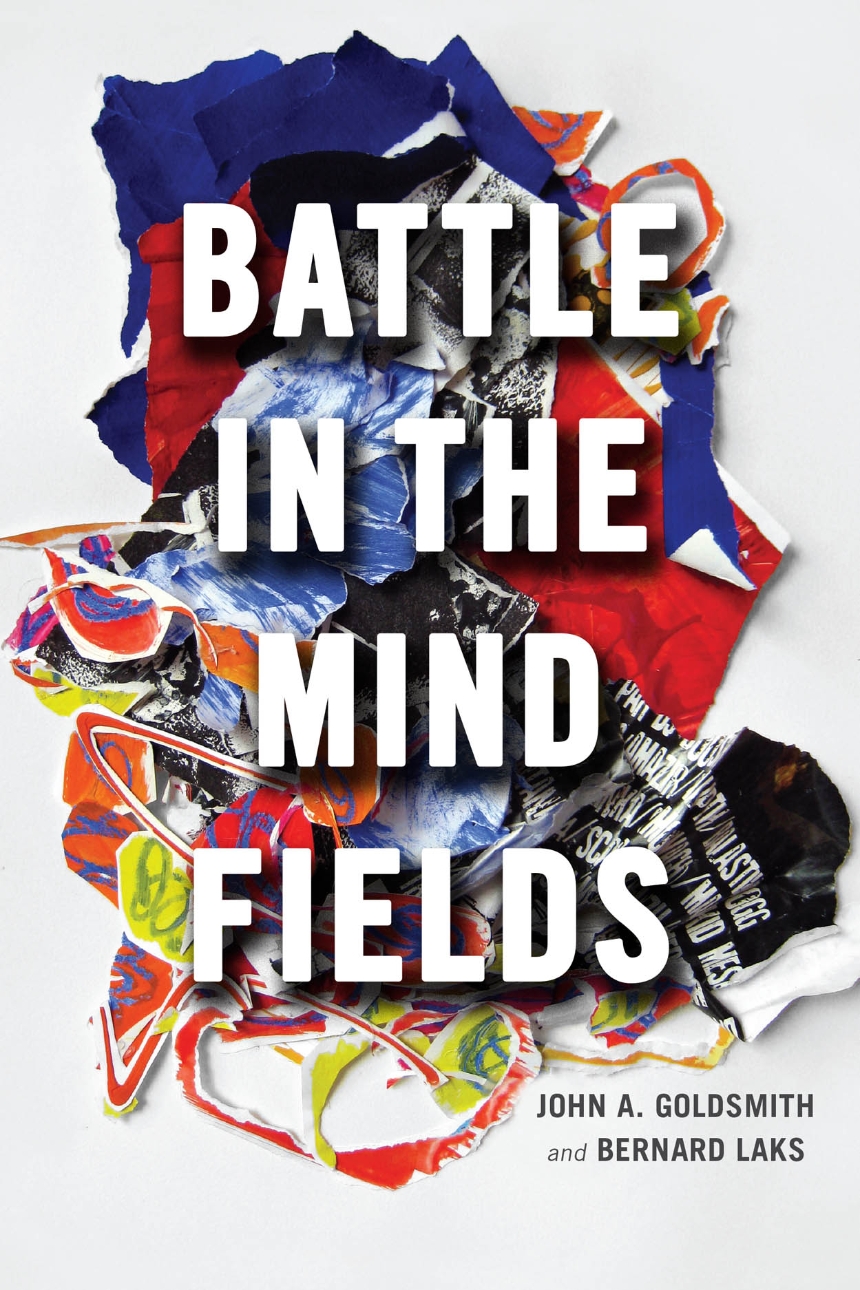Battle in the Mind Fields
“We frequently see one idea appear in one discipline as if it were new, when it migrated from another discipline, like a mole that had dug under a fence and popped up on the other side.”
Taking note of this phenomenon, John Goldsmith and Bernard Laks embark on a uniquely interdisciplinary history of the genesis of linguistics, from nineteenth-century currents of thought in the mind sciences through to the origins of structuralism and the ruptures, both political and intellectual, in the years leading up to World War II. Seeking to explain where contemporary ideas in linguistics come from and how they have been justified, Battle in the Mind Fields investigates the porous interplay of concepts between psychology, philosophy, mathematical logic, and linguistics. Goldsmith and Laks trace theories of thought, self-consciousness, and language from the machine age obsession with mind and matter to the development of analytic philosophy, behaviorism, Gestalt psychology, positivism, and structural linguistics, emphasizing throughout the synthesis and continuity that has brought about progress in our understanding of the human mind. Arguing that it is impossible to understand the history of any of these fields in isolation, Goldsmith and Laks suggest that the ruptures between them arose chiefly from social and institutional circumstances rather than a fundamental disparity of ideas.
Taking note of this phenomenon, John Goldsmith and Bernard Laks embark on a uniquely interdisciplinary history of the genesis of linguistics, from nineteenth-century currents of thought in the mind sciences through to the origins of structuralism and the ruptures, both political and intellectual, in the years leading up to World War II. Seeking to explain where contemporary ideas in linguistics come from and how they have been justified, Battle in the Mind Fields investigates the porous interplay of concepts between psychology, philosophy, mathematical logic, and linguistics. Goldsmith and Laks trace theories of thought, self-consciousness, and language from the machine age obsession with mind and matter to the development of analytic philosophy, behaviorism, Gestalt psychology, positivism, and structural linguistics, emphasizing throughout the synthesis and continuity that has brought about progress in our understanding of the human mind. Arguing that it is impossible to understand the history of any of these fields in isolation, Goldsmith and Laks suggest that the ruptures between them arose chiefly from social and institutional circumstances rather than a fundamental disparity of ideas.
656 pages | 27 color plates, 2 line drawings, 4 tables | 6 x 9 | © 2019
History: History of Ideas
Language and Linguistics: General Language and Linguistics
Philosophy: Logic and Philosophy of Language
Reviews
Table of Contents
Preface
Chapter 1: Battle in the Mind Fields
In the Beginning
Soft Mentalism, Hard Mentalism
Liberation Moments
Our Kind of Science
The World of Ideas and the World of Social Relations
Generations
Authority
Group Identity
Ideology
Jehovah’s Problem and Noah’s Solution
Credit Problem and Heroes
Mind and Materialism
Conclusions
Chapter 2: The Nineteenth Century and Language
Introduction: History, Typology, Structuralism
Deep Time
Linguistics
Deep Time
Linguistics
Chapter 3: Philosophy and Logic in the Nineteenth Century
Philosophy
Logic: Boole, Frege, Russell
Chapter 4: The Mind Has a Body: Psychology and Intelligent Machines in the Nineteenth Century Logic: Boole, Frege, Russell
Germany, the Homeland of Psychology in the Nineteenth Century
Psychology Comes to the New World
Psychology in France
The Unity of Mankind—and the Differentiation of Types of Humans
The Era of Machines
Moving On
Chapter 5: Psychology, 1900–1940 Psychology Comes to the New World
Psychology in France
The Unity of Mankind—and the Differentiation of Types of Humans
The Era of Machines
Moving On
Structuralism and Functionalism
John B. Watson and Behaviorism
The Second Generation of Behaviorists
Gestalt Psychology
The Period Comes to a Close
John B. Watson and Behaviorism
The Second Generation of Behaviorists
Gestalt Psychology
The Period Comes to a Close
Chapter 6: American Linguistics, 1900–1940
Early American Anthropology
Edward Sapir
The Phoneme
Leonard Bloomfield
Sapir and Bloomfield
The Creation of Linguistics as a Profession
Edward Sapir
The Phoneme
Leonard Bloomfield
Sapir and Bloomfield
The Creation of Linguistics as a Profession
Chapter 7: Philosophy, 1900–1940
Edmund Husserl
Bertrand Russell, Ludwig Wittgenstein
Logical Positivism, Logical Empiricism
Conclusions
Bertrand Russell, Ludwig Wittgenstein
Logical Positivism, Logical Empiricism
Conclusions
Chapter 8: Logic, 1900–1940
Three Approaches to the Philosophy of Mathematics
The Chrome Machine of Logic
The Logicians’ Grammar
Conclusions
Chapter 9: European Structuralism, 1920–1940
Nikolai Trubetzkoy
Roman Jakobson
Structuralism and the Prague Linguistic Circle
Phonology
Death, War, and Pestilence
Chapter 10: Conclusions and Prospects
Midnight in the Century
Guideposts
Prospects
Conclusions
Notes
References
Index
